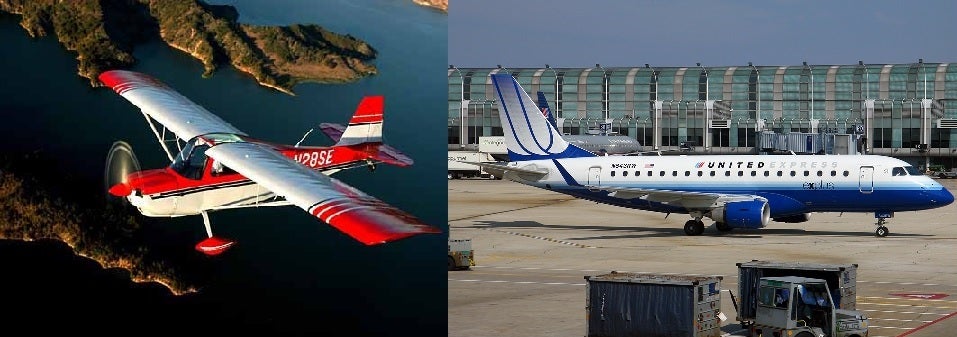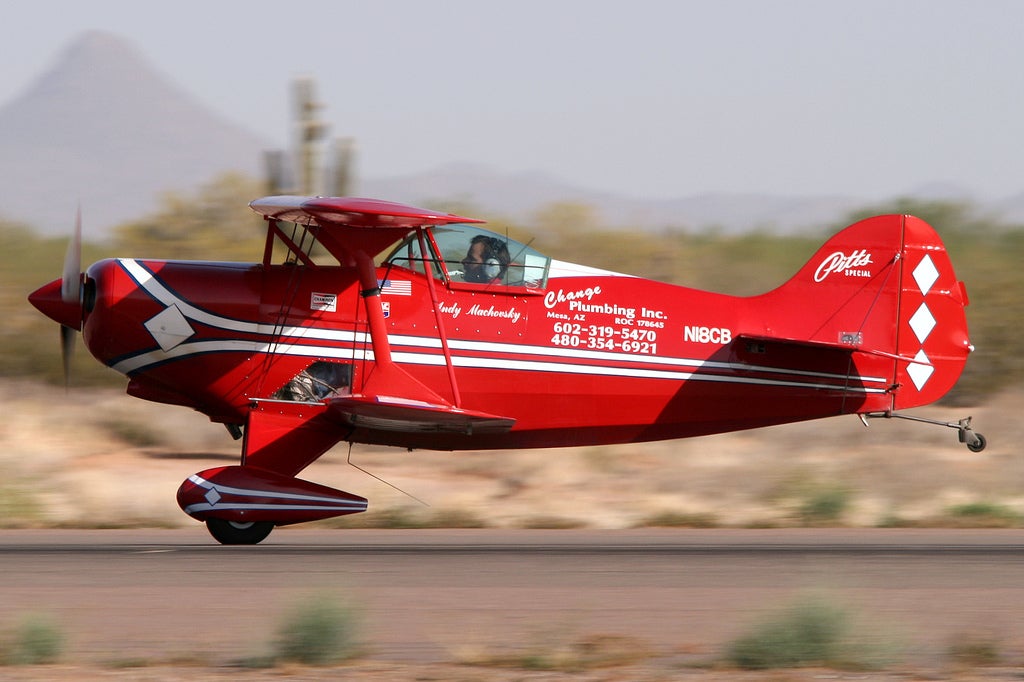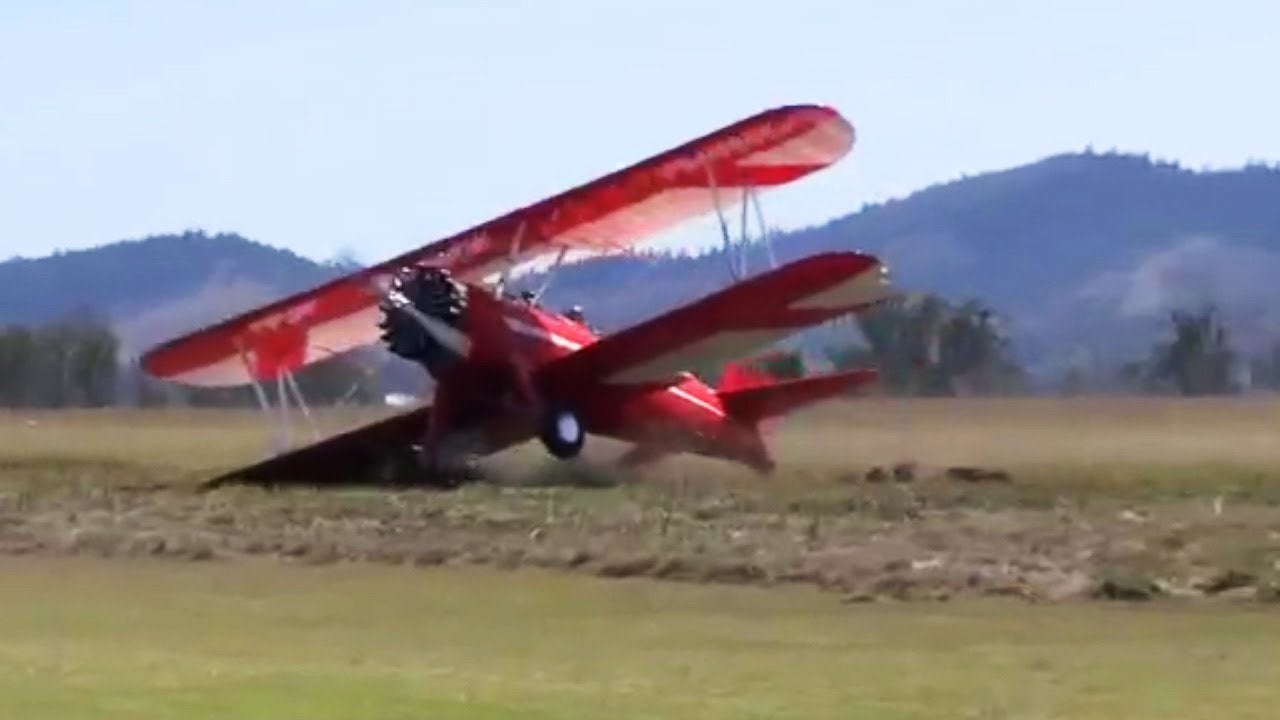 "Grindintosecond" (Grindintosecond)
"Grindintosecond" (Grindintosecond)
05/07/2015 at 23:14 ē Filed to: planelopnik
 10
10
 5
5
 "Grindintosecond" (Grindintosecond)
"Grindintosecond" (Grindintosecond)
05/07/2015 at 23:14 ē Filed to: planelopnik |  10 10
|  5 5 |

I never learned how to fly a tail wheel aircraft. Quite a few pilots never do. Some of the most iconic airplanes of legend and some of the most fun home builts were designed and built like this. After over 12,000 hours of flight time, I decided I should do something about my deficiency and finally finish this endorsement, and learn to fly the tail wheel.
Because itís the absolute opposite of the automated digital screen electric jets Iíve flown for over a decade. Iím going as un-automated as possible.
A small Cessna or Piper is pretty much designed to fly itself. Roll the plane a bit, and it will roll back to level. Take off and the rudder is set to assist in coordination. Spin the sucker and let go of the controls and it will about right itself. Tri-gear planes are mostly designed this way, to help you recover from screwing up. Not many are difficult to manage. Not so with the ďconventionalĒ configuration, or tail wheel plane. Odd thing eh? the first style of landing gear is the tail wheel and therefore earns the name conventional for itís type.
Comparison of opposites.
The plane on the left is a Citabria 7GC. Two people seated tandem and a 150-160hp engine, depending on the model year. Itís steel tube and fabric body is held to the aluminum structured and also fabric covered wing with struts and bolts. It flys at a cruise speed of around 120mph and approaches to land are flown at about 65mph using flaps, around 70 without. I am very lucky in this case as a few minutes from my house is a local airport that rents three of these things. One newer, one older, and one version called the Super Decathlon that has quite a bit more power and quite a bit more aerobatic ability. At $180/hour I will not be affording that one, but the others are considerably less so I figured Iím just plain lucky to even have the chance to rent a tail dragger where I live. $115/hr it is for the cheaper Citabria. Adding an instructor is...more. It also is aerobatic and designed in a way to be a more neutral handling plane....ie: Not helpful in returning to normal. In some ways itís almost divergent from what you want, a trait to help it be aerobatic.
The plane on the right is my current office. Embraer 170. It lands nose high, and can float down the runway in that state if I want it to over a small range of speed allowing good landings. Itís cruise speed is around 500mph, altitude dependent, and the approach speed is anywhere from 120-150mph depending on just how heavy it is on arrival. Whatís better? It has two bathrooms and usually two people in the back willing to find some coffee for me in cruise because Iím fucking nice. This style of plane, the tricycle gear, is what I have worked with since I began flying back in 1992. They both fly. Thatís about the only thing they do similar.
Control:
Flying any computer simulator program should clue us in to how a plane behaves. Power up, steer it down the runway using the nose wheel and pull back to fly. Landing, nose up as power comes off, plop down on the main gear, let the nose down and then use brakes to stop. Thatís about as simple as I can make it. There is some bits of rudder being used to counteract the engine torque and effect of the propeller but thatís very marginal inputs. What I discovered is the tail wheel aircraft is another animal of control.
There isnít a nose wheel to keep the plane from wandering around on the ground. Itís on the tail. Fine, Iíll use that one. It worked, until it came off the ground.

As we see here, this plane has no direction control using the wheel in back. so what happened to me? Well, what Iím about to write is exactly what happens to anyone thatís experiencing a tail wheel plane for their first time, old hand or a brand new student pilot, Itís about the same.
When the tail rose up, the angle of that giant gyroscope of a propeller in front changed briefly and using general physics, it pivoted the plane to the left. The torque of the engine spinning that prop also tried to roll the plane that direction. There was so much left out of nowhere once that wheel was off the ground the feet started to dance. The plane had no intention of staying straight. I tried to use enough right foot connected to the rudder to keep the nose straight but too much makes it veer a bit to the other direction, so I relaxed a bit of pedal pressure. Another turn to the left. More of my foot, more to the right. I finally found an equilibrium balance to keep it tracking straight as I accelerated. Looking at a direction trace, it would have appeared like a drunk driver swerve down the runway. The main gear is still on the ground so wherever theyíre pointed, the plane will go. Imagine keeping your car straight down the road by holding a very large turn to the right in your steering wheel. Unchecked, the plane is set up from the start to be in the grass in a hundred feet without any input from the pilot. If the pilot had a led right foot or makes heavy handed inputs, the plane will enter a self induced ďtank slapperĒ, heading left and right without finding a middle ground. Add speed and it gets worse. Thatís not the last time I saw one of those.
What just happened is not really anything new to someone who flys tail wheel to begin with. To anyone else, itís alarming. At flying speed, I took off. At this point it was any normal plane Iíve ever flown in behavior. Iím just staying coordinated with rudder and holding a compass direction. The other side of this story is the landing. That has been the hardest part of all this. Trying to eventually make a nice landing among what at times feels like a bunch of controlled crashes.

In adjusting to a new airplane a pilot will discover the tendencies of that plane and figure out the control pressures to tame them. All by feel in relation to sight of the environment change. The change in environment for me was learning just how high...or low to the ground I am when on the runway. I kept trying to land the plane but I was always doing that five feet before I should. Iím used to sitting ten above the ground.
The goal of a tail wheel plane is to land either on all three wheels at once (three-point landing), or on the main wheels and as I slow down, the tail lowers to touch at slower speeds (wheel landing). Whatís so hard for me, was to stop bringing that nose up as I slow down like the regular planes Iíve flown bringing it in to a full stall style of touchdown. Doing that Hits the tail wheel first making the main gear thwack down hard. this is not good. I did that about four times before I figured it out. Once at the angle all three wheels would touch at once and not the tail first of the front first, I had to add some power so I donít slow down and hit the ground hard....which I also did about three times more. Hell I was going to shake this plane apart - and then.....it just started to work.
My touchdowns were softer and softer. I held an attitude of nose pitch and softly let it settle down using variable power instead of drop and bouce at idle. The wheel landings were no longer like a firm impact of a car hitting a speed bump at 50+mph. I always had a strong feel for machines, but when it all started working - the satisfaction was immense. It all was working in crosswinds as well (Iíll find out about stronger ones soon). I was having fun again where the only fun of the last decade was crosswind landings, flying a few feet on top of the clouds and the visual approaches to Regan National Airport in D.C. (Go sit in the park to the north of the main runway sometime if you wish to have a good time watching for yourself.)
(This isnít me. It is at my regular speed.)
Iím not yet finished with the sign-off. (Itís just a qualification really, not an actual additional license but an certified instructor has to deem me capable) Iíve had two previous chances to get it done with friends in college and work before now and both times I didnít take full advantage. The issue here is that itís now costing me about $1,800 of todayís money to get this done. Itíll cost ya to procrastinate in the end I always find. Iíll have another skill set soon and until things at work get better or change in other ways, this is the only style of airplane I will want to fly on my own for my time and use to expose my family to flying.
The only fear I have is my kids wanting to do this for a living. Oh god no, not anymore.
 desertdog5051
> Grindintosecond
desertdog5051
> Grindintosecond
05/08/2015 at 00:03 |
|
Great post. Thanks.
 Supercharged-V8-Jag
> Grindintosecond
Supercharged-V8-Jag
> Grindintosecond
05/08/2015 at 01:05 |
|
Congrats on getting your tail dragger endorsement! I first learned to fly in Citabrias: Bellanca and American Champion 7ECA, 7GCAA and 7KCABs. That was years ago though... I miss flying them :-(
 krwalsh
> Grindintosecond
krwalsh
> Grindintosecond
06/02/2015 at 19:02 |
|
Nice post. I got my tailwheel endorsement in a Super D a couple years back. I really liked wheel landing that plane, especially in a cross-wind on one wheel. Dancing on the rudder pedals, holding the stick over to keep it rolled into the wind, pushing just so as the wheel touches down to stick the landing, then unwrapping the aileron as the other wheel settles, and finally letting the tail drop as the speed falls. I could spend all afternoon doing patterns like that.
 mark
> Grindintosecond
mark
> Grindintosecond
06/02/2015 at 20:41 |
|
I was fortunate to have my first commercial job flying power line patrol in both the 7GCBC and PA-18. Best two years of my flying career, spring time.. doors come off, grass strips, low level all day.....not to say high crosswind landings in the Shorts wasnít interesting :p
 SandZR2
> Grindintosecond
SandZR2
> Grindintosecond
06/02/2015 at 20:59 |
|
Great write up! I have been learning to fly at the airport near my house in a Cessna 140. It is really amazing to have the chance to fly a plane like that. So far I have done all but 1 hour of my pilot training in that airplane.